Viggie From A to B
About fuel. As the Vigilante was developed from the A-5A to the A-5B, fuel capacity was added via two additional “wet” hard points under each wing to carry a total of four drop tanks and additional internal tankage housed in a dorsal fairing or “hump.” The A-5B also incorporated boundary-layer (blown) leading edge flaps/slats to improve low speed handing as well as beefier landing gear to better withstand the stresses of carrier launches and recoveries. The new technology incorporated into the Vigilante was becoming more reliable, but the A-5Bs never entered service under that designation. The majority of them became RA-5C variants.
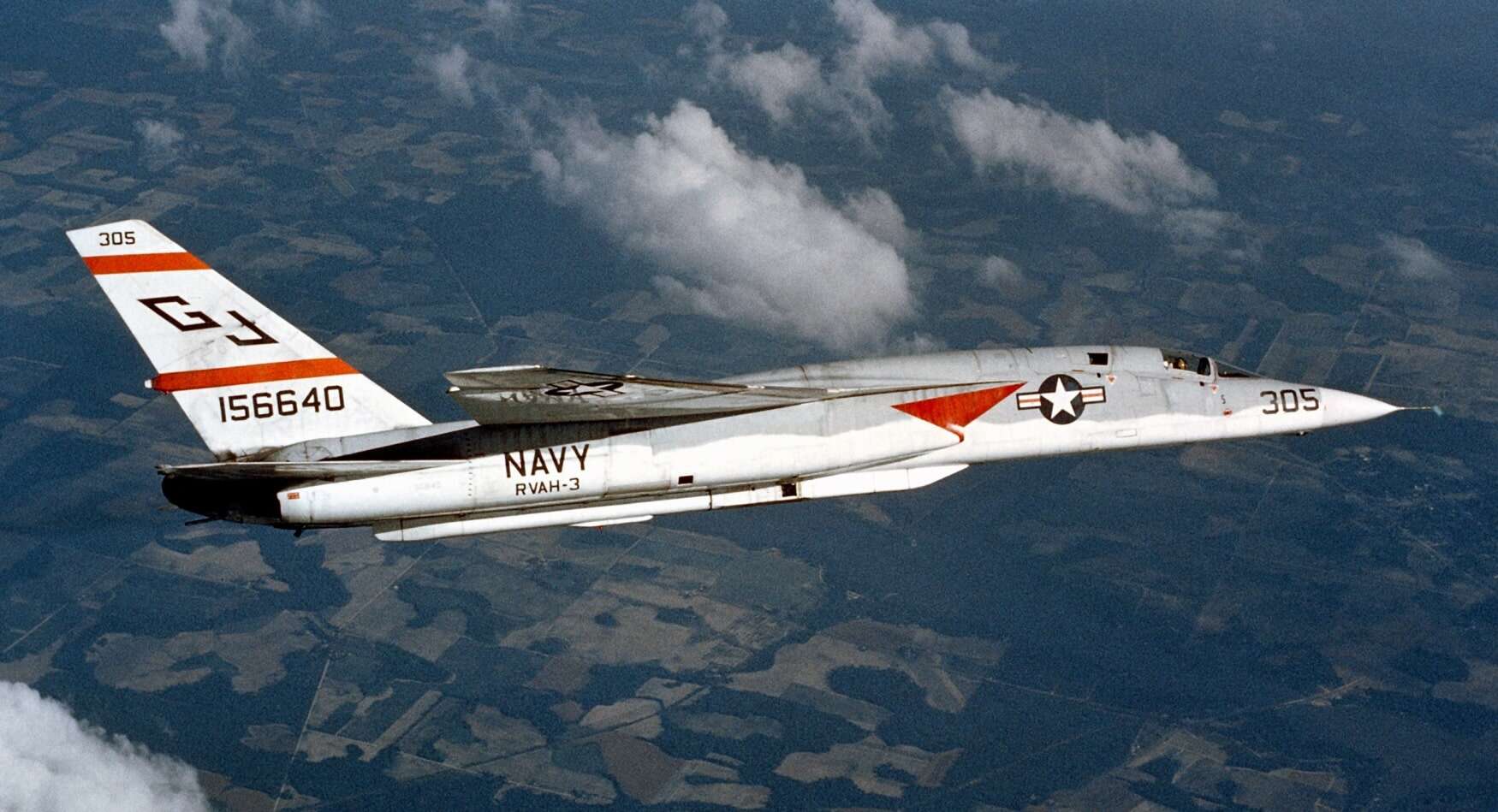
Smile and Wave
Those RA-5Cs were modified with a long eight-station ventral fairing (canoe) to carry a variety of sensors. RA-5Cs also sported a modified wing with slightly more surface area thanks in part to a leading edge extension that also improved low-speed handling. The reconnaissance equipment added to the RA-5C, including the APD-7 side-looking airborne radar (SLAR), AAS-21 infrared line scanner, vertical, oblique, and split-image cameras as well as 3 inch and 18 inch horizon-to-horizon panoramic scanning cameras, improved electronic countermeasures (ECM) suite, and AN/ALQ-61 electronic intelligence system, added nearly 10,000 pounds to the RA-5C airframe. Consequently even when later equipped with uprated J79 engines the recon Vigilantes were slower to accelerate and climb but straight-line speed was not negatively impacted.

Flexible Performer
Though the Vigilante was intended to replace or augment the Douglas A-3 Skywarrior and the Lockheed P-2 Neptune in the heavy attack or atomic bombing role, in a practical sense it never really did. There was a timing component involved. After the first few years the A-5 was in service the Navy’s piece of the nuclear triad shifted to submarine-launched ballistic missiles. The attack version of the A-5 served short service lives. Those groundbreaking technologies built into the A-5s were troublesome in the beginning although the reliability of the tech improved as maintainers gained experience. The A-3 in particular was just too adaptable an airframe to replace. But the reconnaissance role of the RA-5C kept the Vigilantes in business.
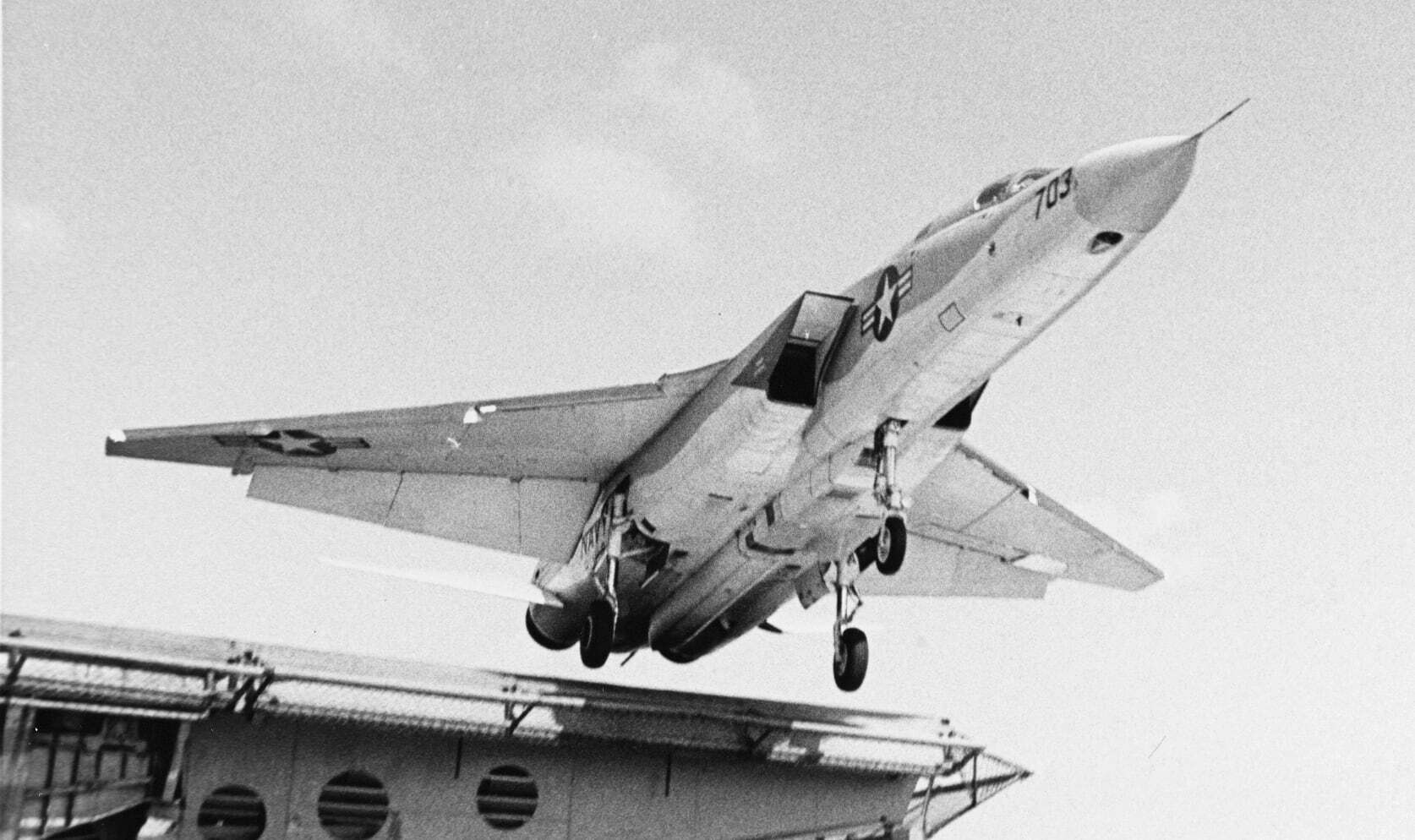
Titles and Monikers
In 1963 production of A-5s was stopped. The majority of the airframes then in service were converted to the RA-5C specification. As a result the Heavy Attack (VAH) designation was changed to Reconnaissance Attack Heavy (RVAH) for the squadrons flying the Vigilante when they transitioned from A-5s to RA-5Cs. That transition began in 1963. The Vigilante crews had previously consisting of the pilot and a bombardier/navigator. The reconnaissance role of the RA-5C drove the back-seater’s title to change to the reconnaissance attack navigator (RAN).
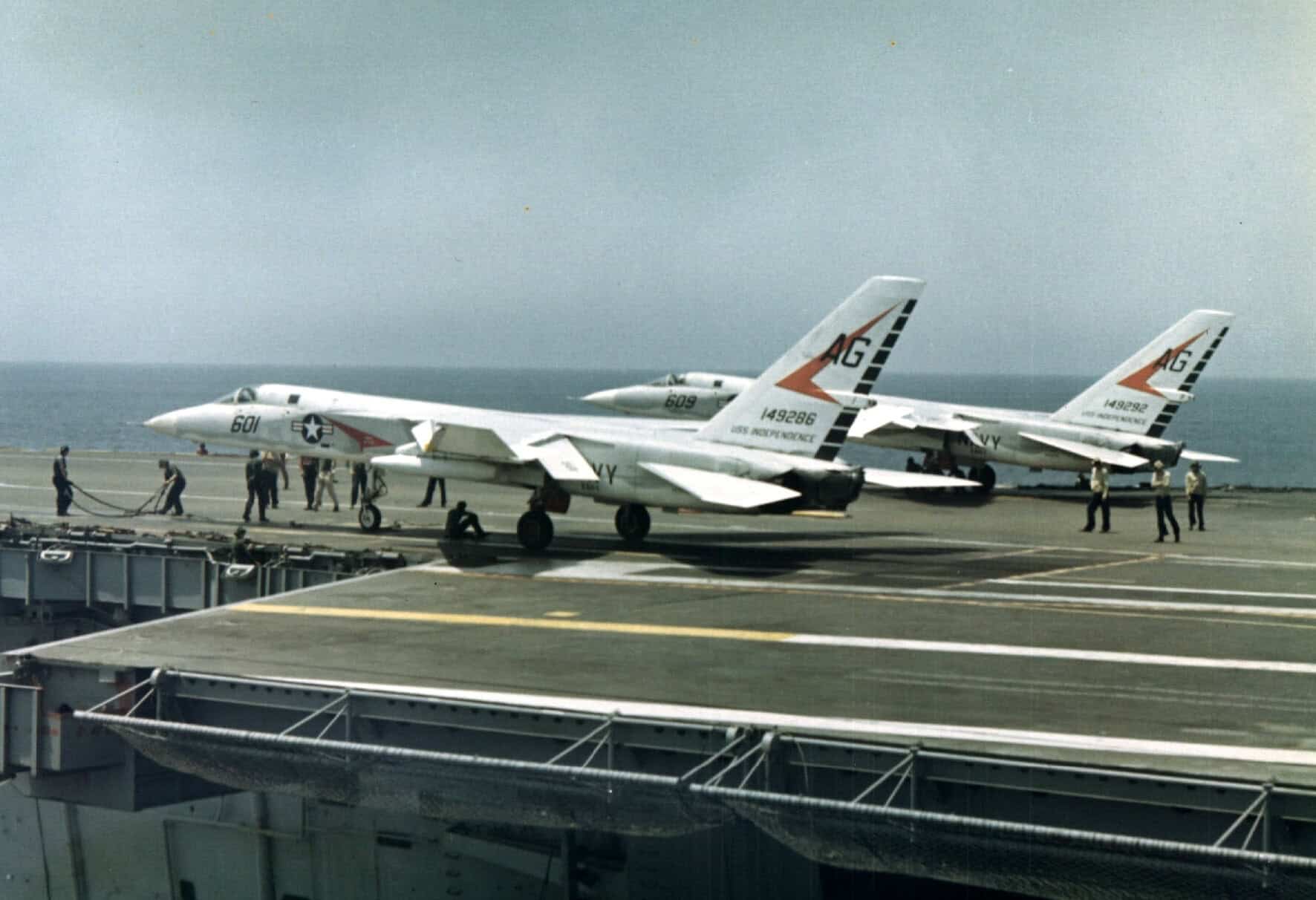
Backseat Driver of the Mission
Because the RA-5C had so many systems installed the role of the RAN was integral to mission success. He was tasked first and foremost with operation of the ASB-12 inertial navigation system and its associated systems such as the under-nose video camera. The RAN also controlled the camera system(s), the strobe lighting pods used for flash lighting, the digital data system (DDS) which encoded location, speed, altitude, and other data on the negative film, the infrared mapping unit, side-looking radar, and ECM systems including radar warning receivers and radar jamming equipment.
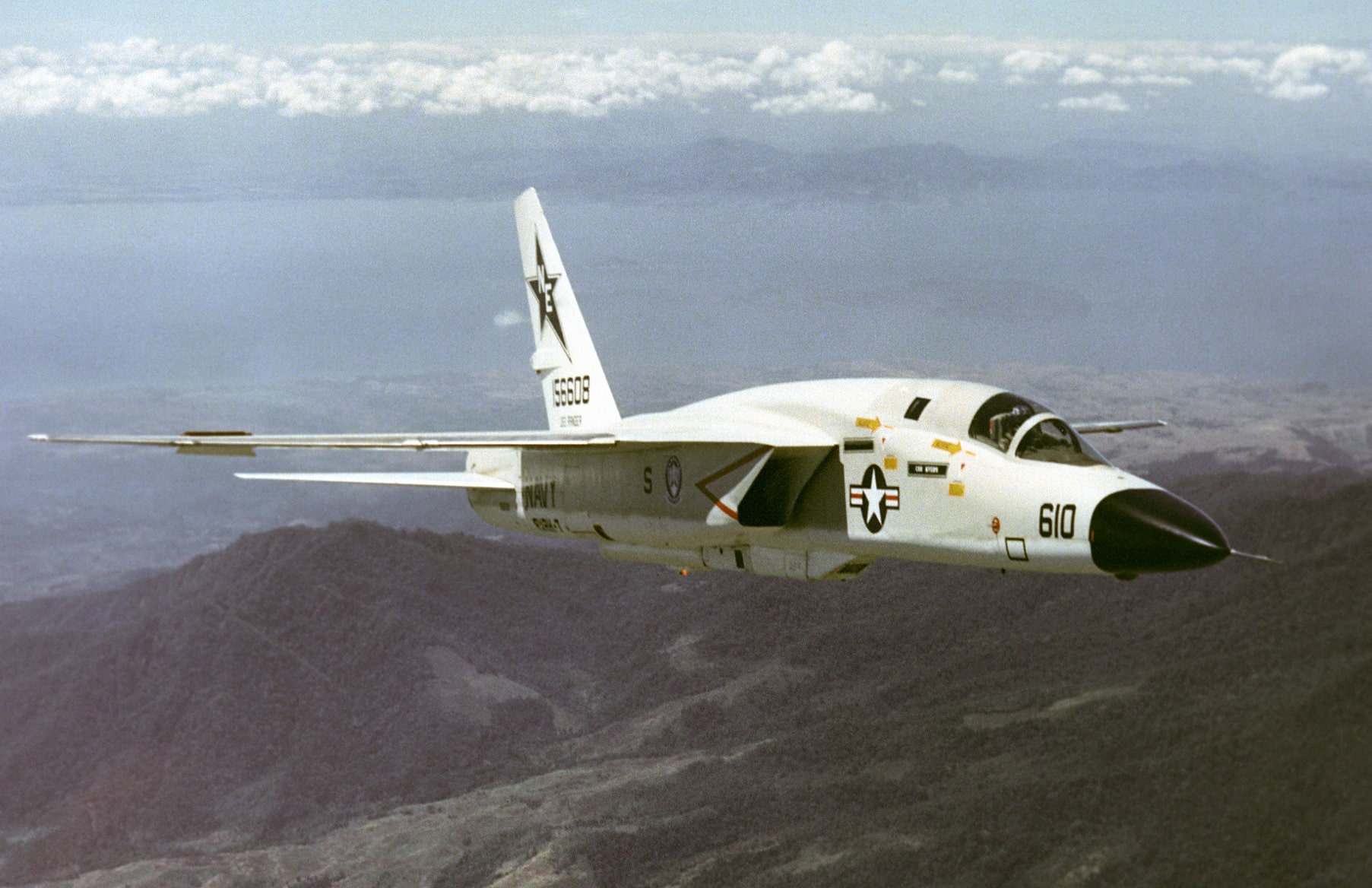
First Takes
Prior to the debut of the RA-5C the heavy attack squadrons flying bomber Vigilantes such as VAH-7 Peacemakers deployed aboard carriers like the first cruise of the USS Enterprise (CVAN-65) beginning in 1962. That particular deployment was extended when the Cuban Missile Crisis flared up during October of that eventful year. RA-5Cs began their operational service in 1963 with RVAH-3 Savage Sons at NAS Sanford. Eventually a total of ten RVAH squadrons were established, the majority of which were based at NAS Sanford. These squadrons deployed aboard the large-deck Forrestal-class and later the USS Nimitz (CVN-68)
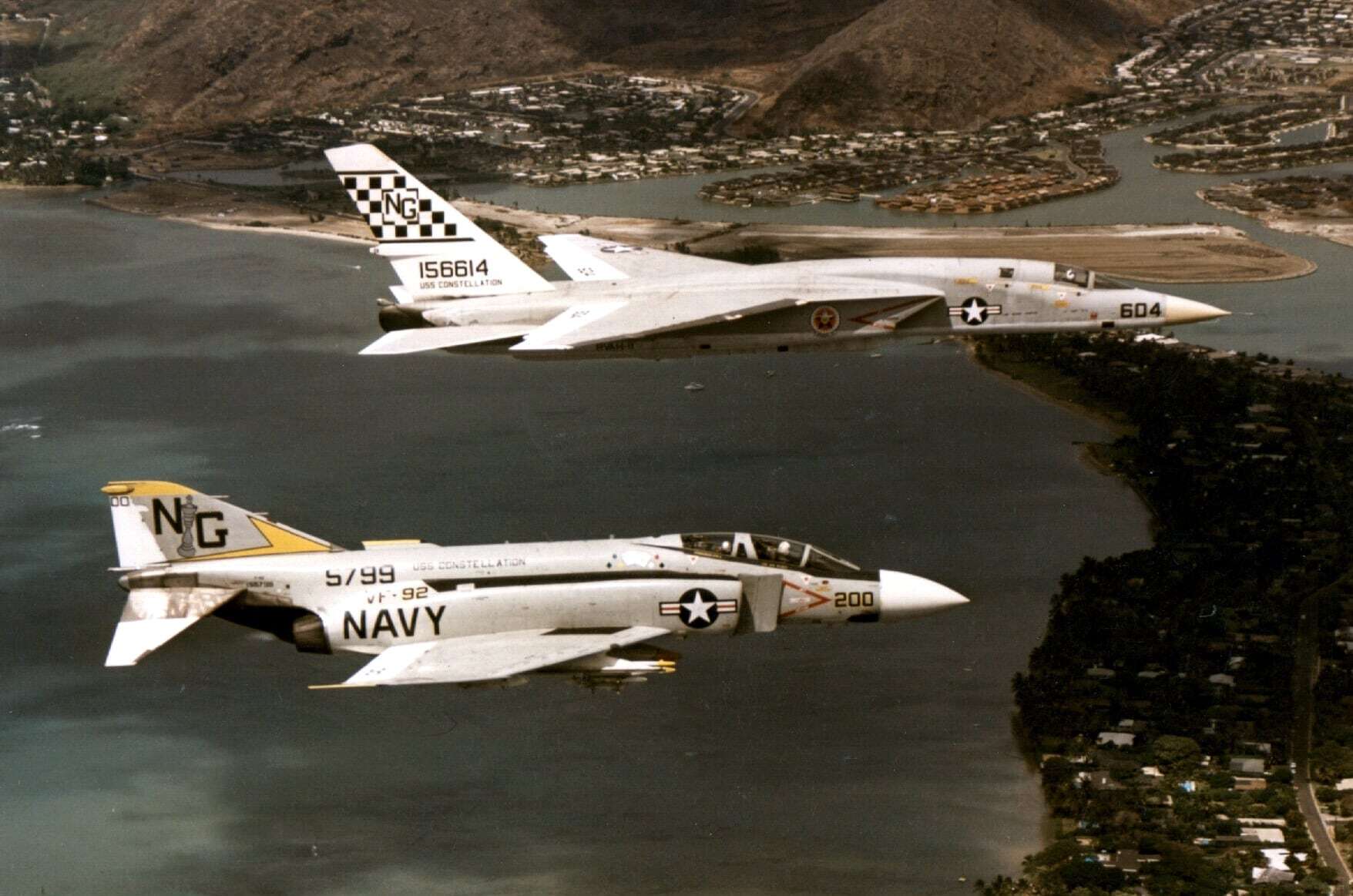
Taking High Risks and High Losses
Eight of the ten RVAH squadrons deployed to Southeast Asia 31 times aboard Task Force 77 carriers for service during the Vietnam War. The majority of Vigilante sorties were high-risk medium-level post-strike reconnaissance missions flown in full afterburner while “feet dry” over North Vietnam. Attrition of the RA-5C fleet was unprecedented. Six aircraft squadrons began deploying with five, then four, and finally only three aircraft as the war progressed and losses mounted. 11 RA-5Cs were lost to anti-aircraft artillery (AAA). Two more were lost to surface-to-air missiles (SAMs) and one was shot down by a marauding MiG-21. An additional nine aircraft were lost to operational mishaps. This was the highest Navy loss rate of the Vietnam War.
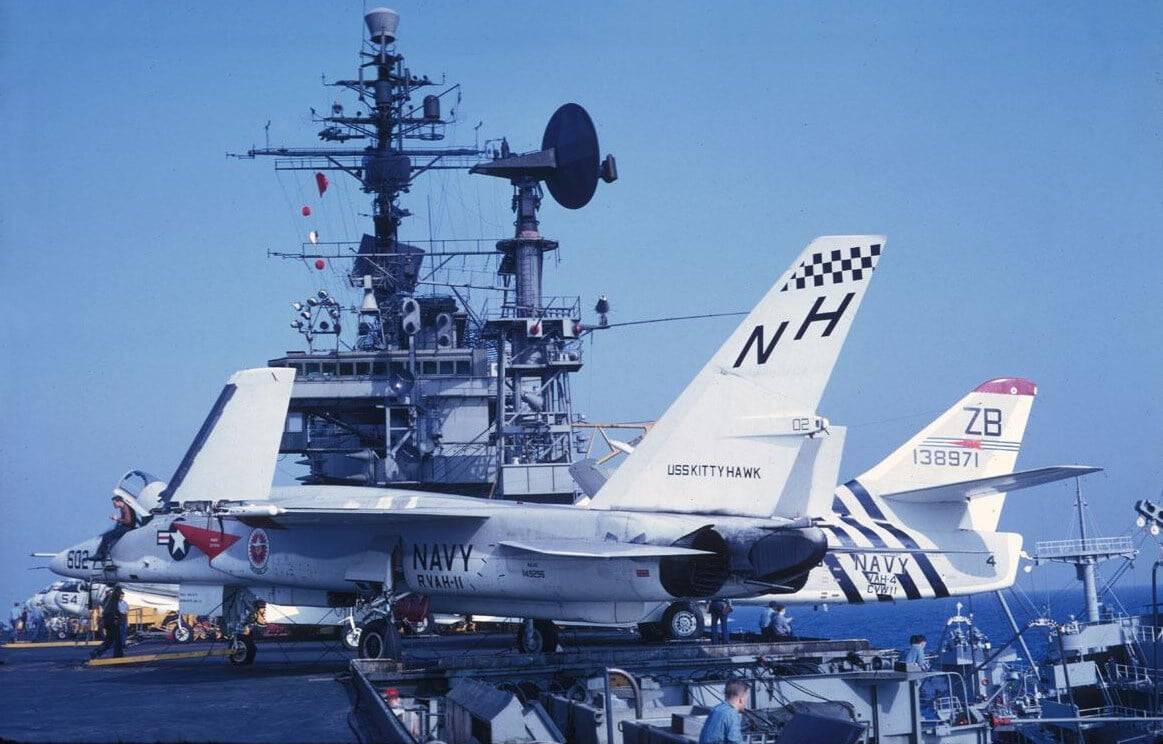
Building More Viggies
Attrition was bad enough, but the missions flown by the RA-5Cs important enough, that North American re-opened their production line in 1968 and produced an additional 36 RA-5Cs before shutting down for good in 1970. When the powers that were decided to close NAS Sanford and move the RVAH squadrons to Strategic Air Command’s Turner Air Force Base (AFB) in Georgia, the Vigilantes were already on their way out. Photo reconnaissance versions of the McDonnell Douglas F-4 Phantom II (Marine Corps-flown RF-4B) and the Vought F-8 Crusader (RF-8A and later RF-8G), along with the RA-3B and ERA-3B variants of the Douglas A-3 Skywarrior had already begun flying the photo recon missions.
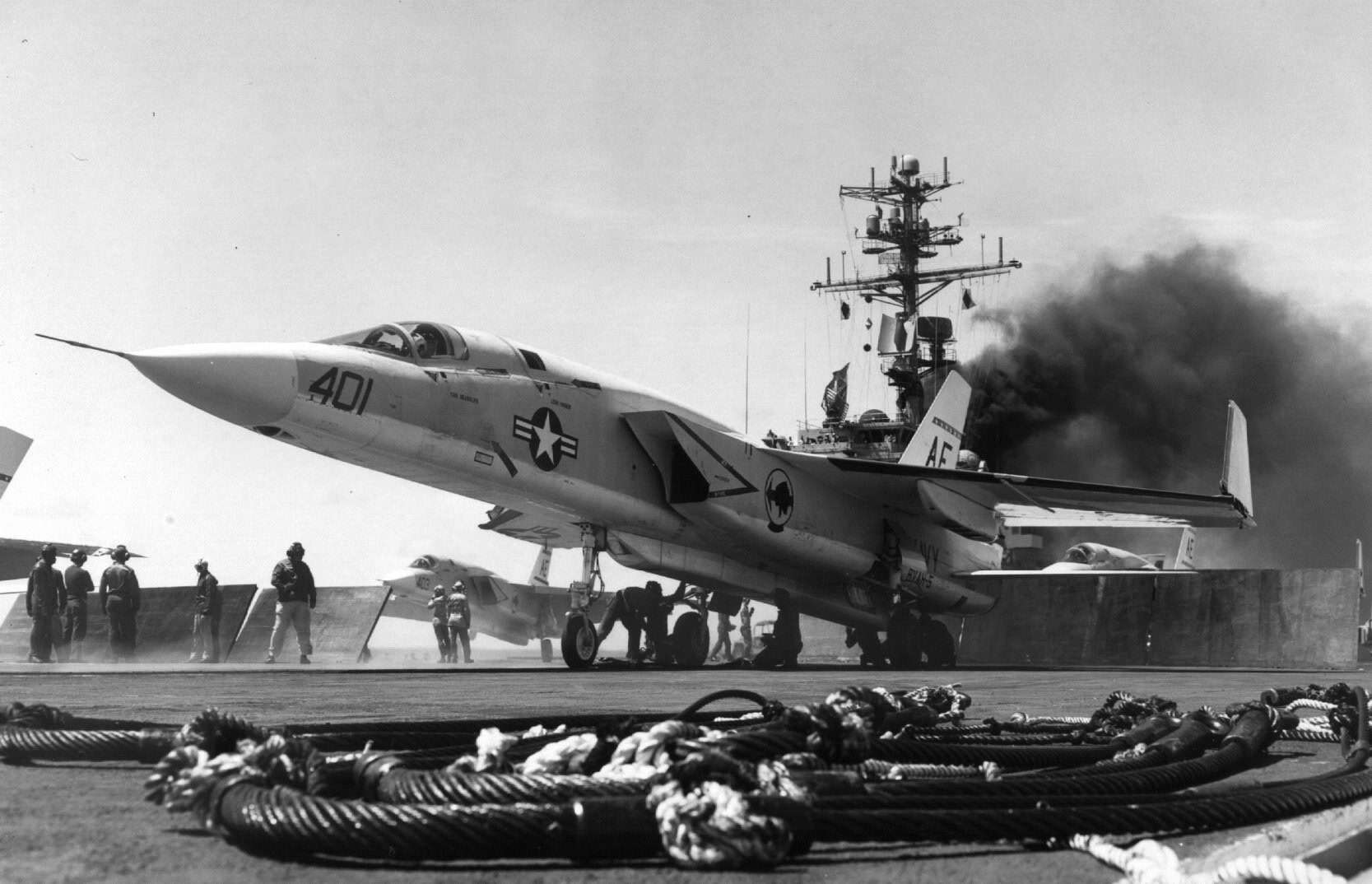
Retiring in Sunny Florida
After a tumultuous time in Georgia and the close of the Vietnam War the remaining RVAH squadrons moved to NAS Key West. Though proven to be a valuable asset to the fleet, Vigilantes were beginning to be phased out of service during the mid-1970s. They took up a lot of space aboard carriers already burdened with air wings flying larger airframes and they were expensive to operate. RVAH squadrons began to be disestablished beginning in 1974. The final deployment of an RVAH squadron was that of the Peacemakers of RVAH-7 aboard the USS Ranger (CVA-61), ending in 1979. The last operational Vigilante sortie took place at NAS Key West on November 20th 1979.


Possibly the first production Lifting Fuselage Configuration (LFC). The LFC was the brainchild of Texas born Vincent Burnelli, 1895 to 1964. Because the A-5, F-14, F-15 and F-111 were military designs (all LFCs), they were not subject to patent infringment litigation from Burnelli. His LFC was still under patent protection well into the late 20th century. Burnelli is rarely given credit for his 40+ years of development of the LFC. See the only surviving Burnelli plane, the 1945 CBY-3, just now getting its finishing touches for display at the New England Air Museum in Connecticut… https://www.neam.org/shell.php?page=restoration_burnelli_2020_09 The LFC is still all the rage with the military, YF-23, F-22, F-35 and all the newest drone fighter escorts and fuel takers.